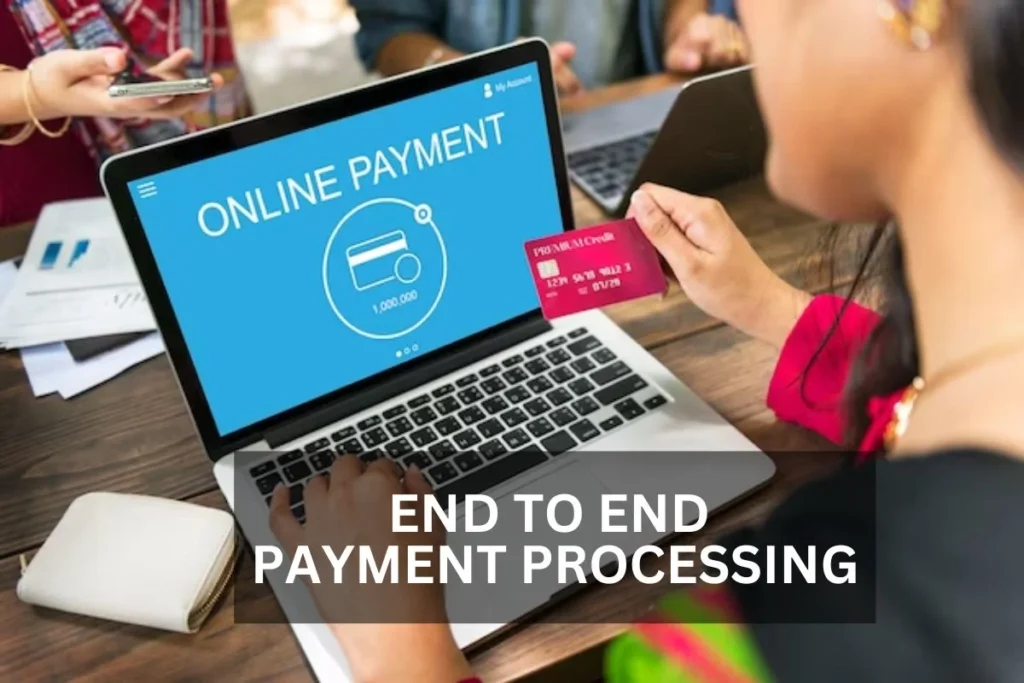In the ever-evolving landscape of modern business, efficient payment processing has become an essential component for ensuring smooth financial transactions. From customers making purchases online to businesses managing their accounts payable, the concept of end-to-end payment processing plays a pivotal role. This article delves into the intricacies of end to end payment processing, breaking down the process, its benefits, and its impact on various industries.
Introduction
In today’s digital age, the way we conduct financial transactions has evolved significantly. The concept of end to end payment processing has gained prominence as businesses and individuals seek seamless and secure ways to transfer funds, make purchases, and manage financial operations.

Understanding End to End Payment Processing
Defining End to End Payment Processing
End-to-end payment processing refers to the entire journey a payment takes, from the moment it is initiated by the payer to the point where it is received by the payee. This process involves various steps and components that ensure the successful and secure transfer of funds.
Critical Components of the Process
End to end payment processing involves several key components, including payment initiation, authorization, authentication, clearing, settlement, and reconciliation. Each of these steps plays a crucial role in ensuring that transactions are completed accurately and efficiently.
Processing payments in a streamlined manner is important
Enhancing the Customer Experience
Positive customer experiences are facilitated by efficient payment processing. Whether it’s a quick and secure checkout process for online shoppers or a hassle-free payment experience in a physical store, a streamlined payment process can lead to increased customer satisfaction and loyalty.
Minimizing Errors and Fraud
A well-established end-to-end payment process incorporates robust security measures to minimize the risk of errors and fraudulent activities. Encryption, tokenization, and multi-factor authentication are some of the techniques employed to protect sensitive financial information.
The role of technology
Payment gateways and processors
Payment gateways and processors act as intermediaries between the merchant and the financial institution. They facilitate the secure transmission of payment data, verify transactions, and ensure funds are transferred accurately.
Security Measures in Payment Processing
Security is paramount in payment processing. Technologies such as SSL (Secure Sockets Layer) certificates, EMV (Europay, Mastercard, and Visa) chip technology, and AI-based fraud detection contribute to safeguarding transactions from unauthorized access and cyber threats.
End to End Payment Process in E-Commerce
Customer Payment Journey
In e-commerce, the end-to-end payment process begins when a customer adds items to their cart and proceeds to checkout. The payment gateway securely collects and transmits payment information, and upon authorization, the transaction is completed, and the customer receives confirmation.
Integration with E-Commerce Platforms
E-commerce businesses integrate payment processing systems into their platforms to offer customers a seamless shopping experience. APIs (Application Programming Interfaces) enable smooth communication between the online store and the payment gateway.
Payment Processing in Financial Institutions
Facilitating transactions for clients
Financial institutions, including banks, credit unions, and investment firms, rely on end to end payment processing to serve their clients effectively. From managing deposits and withdrawals to facilitating international transfers, streamlined payment processes ensure timely and accurate transactions.
Regulatory compliance
Financial transactions are subject to strict regulations and compliance requirements. End-to-end payment processing ensures institutions adhere to these regulations, reducing the risk of legal issues and financial penalties.
Challenges in payment processing
Security concerns
The tactics of cybercriminals are evolving as technology advances. Payment processors constantly face the challenge of staying ahead of potential security breaches to protect sensitive financial data.
Cross-border transactions
International payments involve complex currency conversions and compliance with different regulatory frameworks. End-to-end payment processing seeks to simplify cross-border transactions while ensuring accuracy and compliance.
Future Trends in Payment Processing
Rise of cryptocurrency
Cryptocurrencies are gaining traction as an alternative form of payment. The use of blockchain technology and decentralized networks is reshaping the payment landscape, offering faster and more secure transactions.
Biometric authentication
Biometric authentication, such as fingerprint and facial recognition, is being integrated into payment processes for enhanced security and user convenience.

Benefits for businesses
Efficiency and Cost Savings
Streamlined payment processing reduces manual intervention, minimizes errors, and speeds up transaction times. Savings can be achieved as a result.
Data-driven insights
Payment processing systems generate valuable data that businesses can analyze to gain insights into customer behavior, preferences, and spending patterns.
Conclusion
End to end payment processing is the backbone of modern commerce, enabling seamless transactions across various industries. Its significance in enhancing customer experiences, minimizing risks, and supporting business growth cannot be overstated. As technology continues to advance, the future of payment processing holds exciting possibilities, promising even more secure, efficient, and innovative ways to handle financial transactions.
What is end to end payment processing?
End to end payment processing refers to the complete journey a payment takes, from initiation to completion, ensuring secure and accurate fund transfers.
What is the impact of payment processing on e-commerce?
In E-commerce, efficient payment processing leads to smoother checkout experiences and increased customer satisfaction.
What technologies ensure payment security?
SSL certificates, EMV chip technology, and AI-based fraud detection contribute to payment security.
How do financial institutions benefit from end-to-end payment processing?
Financial institutions can efficiently manage client transactions, adhere to regulations, and enhance client relationships through streamlined payment processes.
What are the future trends in payment processing?
The rise of cryptocurrencies and the integration of biometric authentication are shaping the future of payment processing.